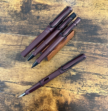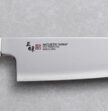Rev Up Your Ride: How Heat Shields Improve Performance in Your Car
Ever wondered how hot the engine gets when belting out at full power? Car engines today have shrunk in size but are pushed to the limits of what they can do. Almost all now have a turbo to reuse exhaust gases and wring out the last horses in the powerplant. But with more power, comes more heat, and turbos, manifolds, and engine blocks can reach temperatures exceeding 1000 degrees. While this may last just a few seconds, it can melt metal, plastics, rubber, and paint and cause irreversible damage to both the main engine and surrounding vehicle components.
What are Heat Shields?

source: facebook.com/carbuildersau/
Basically, heat shields are thermal barriers designed to protect different vehicle parts and systems from overheating. They can consist of varying materials, but in cars, it’s often conductive metals like aluminium formed into heat shield tape and sheets, combined with insulative cores of fibreglass or similar heat-resistant products to reflect radiant heat from sensitive engine and chassis parts. The technology has been passed down from the aerospace industry where it’s been effectively used on spacecraft to counter hellish temperatures when re-entering the atmosphere. Car manufacturers were quick to adapt this to racing, with the first heat shields used in one-off performance cars to gain a competitive edge. The products have evolved and are widely available today. The good news is they’re also very affordable.
Why They’re Used
If you’re modifying any car for more power, say when installing an aftermarket turbo, or experimenting with the fuelling, timing, and ignition, then shields can contain the excess heat these parts produce. This is important for several reasons. By keeping the heat at the source, heat shield products ensure efficiency and longevity, meaning these parts and the engine work as advertised. Additionally, hot turbines or engine blocks won’t cause any damage to surrounding parts and systems like the fuel, coolant, or brake lines, or confuse sensors and bring up the check engine sign in the dash.
Moreover, the products play a vital part in performance. One of the main uses of both heat shield tapes and sheets is around the airboxes and intake. This ensures that the air intended for combustion remains cool, so is richer in oxygen, and results in more efficient combustion and more power. An added benefit is fewer stressed parts due to lower temperatures and less fuel use.
Lastly, hotter engine temperatures can seep into the cabin, and in typical Aussie weather, make longer journeys unbearable even while blasting the air-conditioning at full power. Various heat shield products are used to line areas like the front and rear firewalls, and the exhaust piping so heat remains where it should be. To wrap up, some products also double as acoustic barriers so the cabin is not only cooler but also much quieter.
Tapes, Sheets and Wraps

source: facebook.com/carbuildersau/
Aluminium tape is one of the more common types of heat shields and is often used to protect things like fuel lines, floor pans, body panels, rubber hoses and wiring. The tape is exceptionally thin so fits tight spaces, is easy to apply, and has an adhesive backing that sticks to different materials and surfaces. It is also simple to cut to shape with an ordinary pair of scissors. Tapes are durable and tear-resistant, so once on, they stay in place. You won’t have to fret about punctured or swelling brake lines, leaking coolant, and switches or sensors not working due to melted insulation.
Tapes are effective up to 250 degrees, so will do a fine job even in non-stock engines. Generally, there are two variants, differing in thickness. Those with a thinner aluminium facer are good for reflecting heat from surrounding parts running at moderate temperatures. And thicker, heavy-duty heat shield tape is used to protect components and systems right in front of the engine block, turbo, and exhaust manifold or parts that get really hot.
High radiant heat is best managed with heat shield sheets. These are rigid metal pieces that can contain temperatures of 650 degrees. They reflect almost 90 percent of the heat in crucial engine components. Like tapes, sheets are also made of aluminium. They’re resistant to corrosion making them suitable for the engine bay, vehicle underbody, and exhaust.
A good idea when installing sheets is first to make a template of the part they’re meant to surround. Sheets should be applied with an air gap of 1 to 2 cm, to prevent melting, while still letting hot parts maintain optimal working temperatures. They do take a bit more time to get right than heat shield tape but should last when installed correctly. Just ensure you get the right mounting hardware.
And lastly, we come to wraps. These are usually used with exhaust components. There are different variants, with the racing-spec titanium wrap suited to temperatures over 1000 degrees. They can be used to good effect on aftermarket headers, high-flow catalytic converters, and straight pipes where they improve exhaust flow and thus increase engine performance.
Summing Up
Excessive temperatures can be punishing on any engine part to the point that they cause serious safety issues and high repair costs. While most cars effectively manage the heat with appropriate cooling systems, it’s in modified engines that things can get out of hand. Here, heat shields in different forms do a stellar job at not only protecting the engine and car but can also add a decisive performance boost while keeping things cool.






